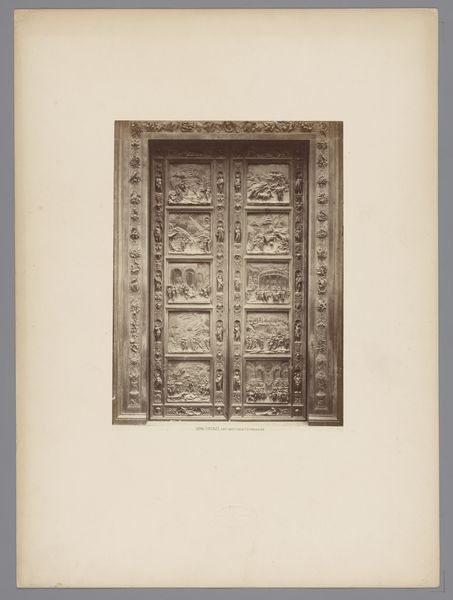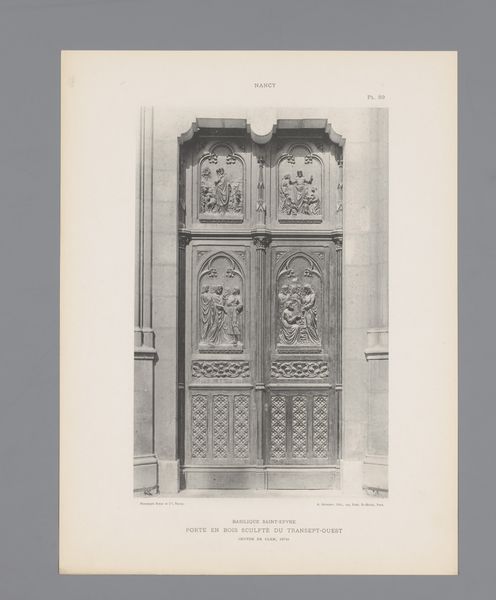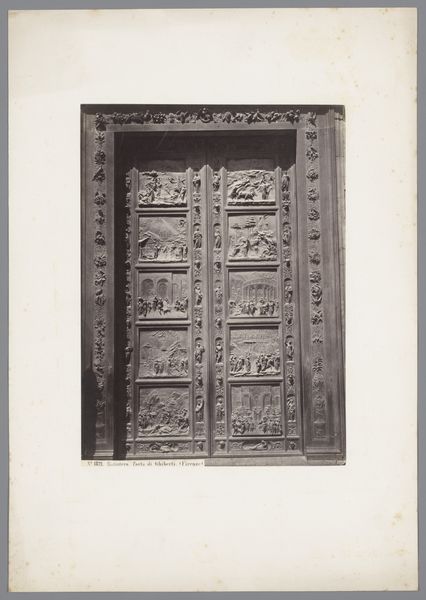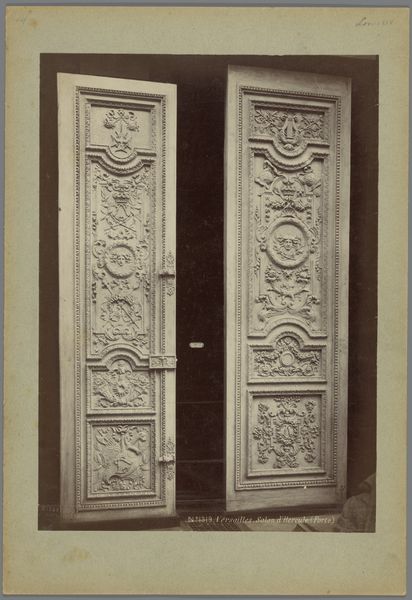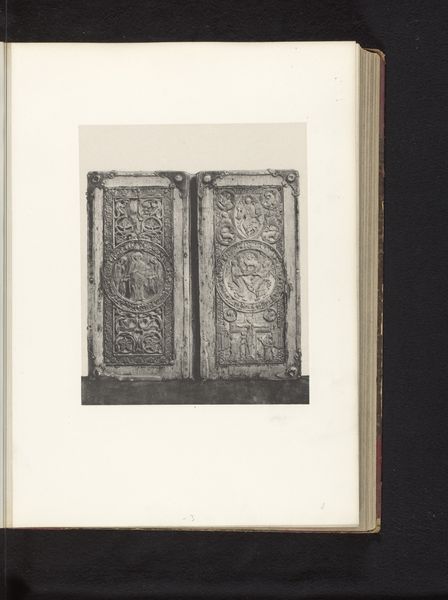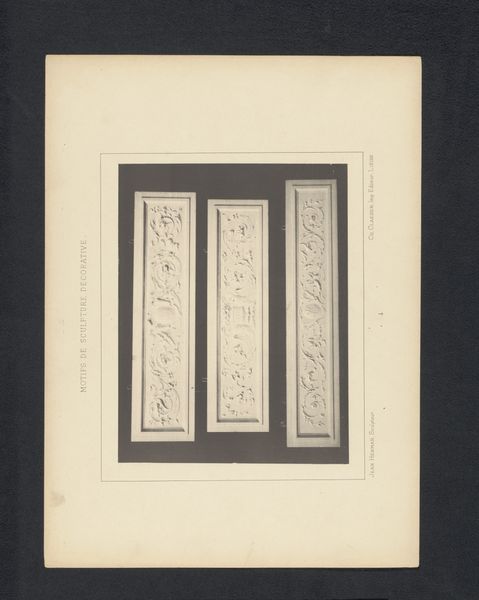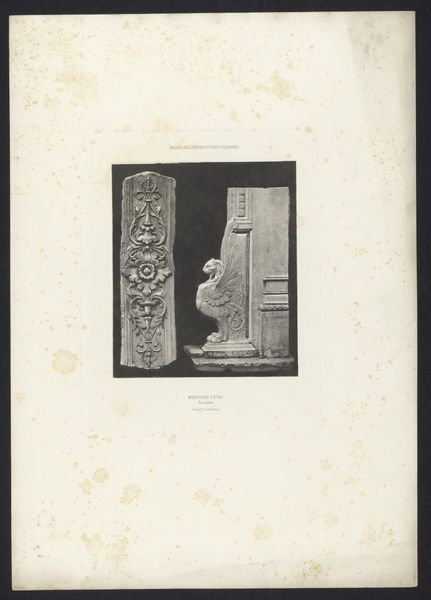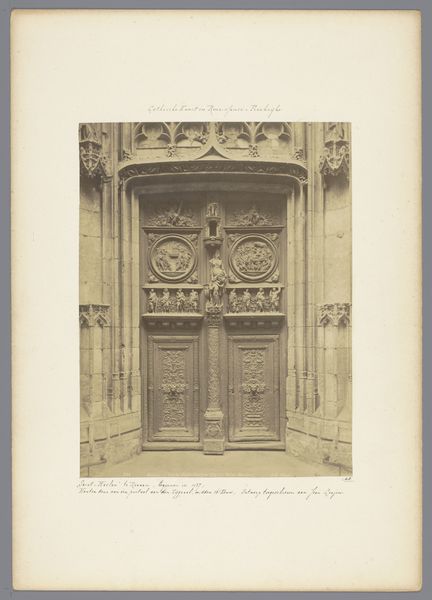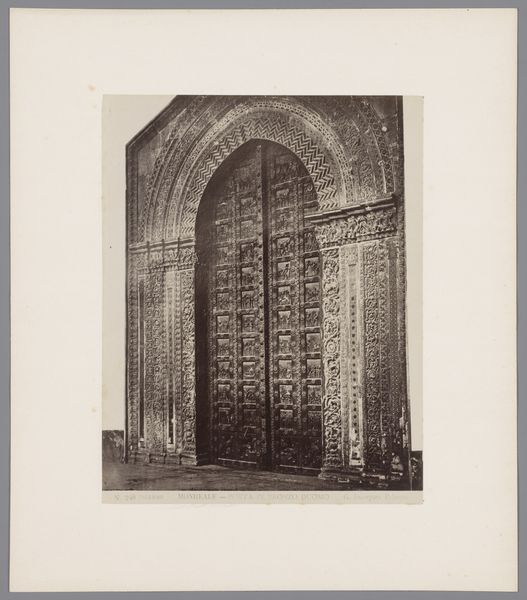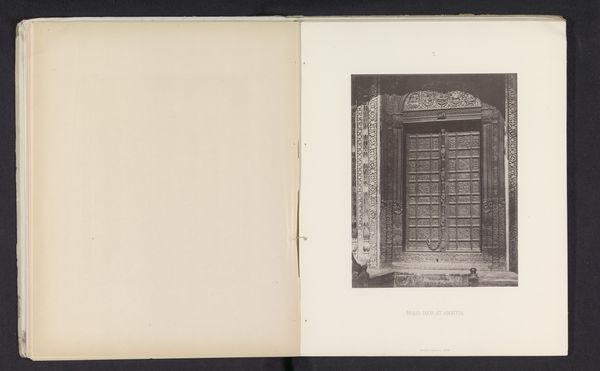
Dimensions: height 448 mm, width 312 mm
Copyright: Rijks Museum: Open Domain
Curator: What a strikingly detailed piece. There's a certain graphic quality to the way light and shadow define the relief. Editor: Graphic, indeed! This print, titled "Twee pilasters uit de kathedraal van Chartres", was created by Médéric Mieusement sometime between 1875 and 1900. It depicts, quite literally, two pilasters – flattened columns attached to a wall – from the famous Chartres Cathedral. The Rijksmuseum houses this particular example of his work. Curator: What I immediately notice is the intense ornamentation. Look at the verticality emphasized by those repeating, intricate patterns. There’s a real visual rhythm here. Are those floral motifs intertwined with more geometric elements? Editor: Precisely. And consider this was produced using engraving techniques, most likely relief, during a period of renewed interest in Gothic art and architectural detailing. These pilasters, when initially constructed as part of the cathedral, required a significant outlay of specialized labor – the kind that shapes cultural landscapes and values within the communities building such a place of worship. The engraving process too required highly specialized skilled workers with their own sets of cultural values, now mediated into printed imagery. Curator: That line work is just stunning. Notice how Mieusement uses contrasting tones to almost sculpt the details into the print. It’s more than just documentation, isn’t it? Editor: It is. It translates the stone carving into a different material context, accessible for study and appreciation by a wider audience via mass production. The print serves as a historical record, certainly, but also a study of the process involved in replicating the elaborate workmanship for didactic, aesthetic or capitalist purposes. Curator: It does invite questions about accessibility, about how architectural grandeur can be disseminated. Thinking about the original pillars at the cathedral, what stories do those physical engravings, translated by Mieusement, narrate? Editor: They symbolize not just religious devotion, but the complex social and economic dynamics of their era, a time where master craftsmen channeled collective faith into physical forms. Mieusement’s print gives us insight into how architectural designs were copied, consumed, and given new life through printmaking. Curator: Reflecting on the interplay between line, form, and context helps unveil the cultural currents informing both the cathedral's structure and its replications. Editor: Absolutely. Mieusement’s detailed piece serves as a reminder that art, regardless of form, embeds layers of history and process in visual form.
Comments
No comments
Be the first to comment and join the conversation on the ultimate creative platform.
